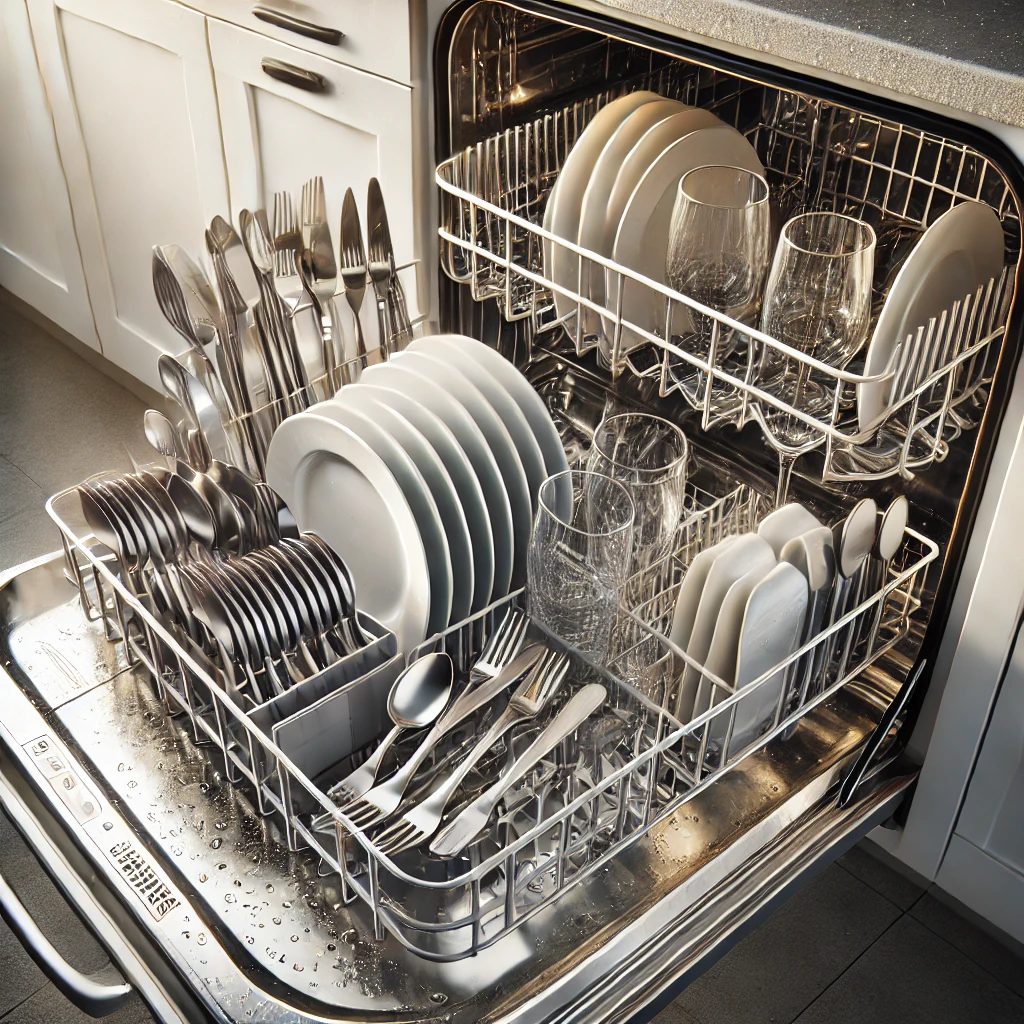
How To Load Your Dishwasher Properly
Loading your dishwasher properly can make a significant difference in how clean your dishes come out and how efficiently your dishwasher runs. Improper loading can lead to poor cleaning results, potential damage to your dishwasher, and even increased energy consumption. Here’s a comprehensive guide on how to load your dishwasher correctly to get the best results.
1. Scrape Off Food Debris
Before loading dishes into the dishwasher, scrape off any large food particles and debris. This helps prevent clogs in the dishwasher’s filter and spray arms.
Steps:
- Use a fork, spoon, or brush to remove leftover food from plates and bowls.
- Rinse dishes lightly if necessary, but avoid pre-washing as modern dishwashers are designed to handle some food residue.
2. Load the Bottom Rack
The bottom rack is designed for larger and heavier items. Place items like pots, pans, plates, and bowls here.
Steps:
- Face dishes towards the centre: Place plates and bowls with their dirty sides facing the centre of the dishwasher.
- Load pots and pans: Arrange pots and pans so that they do not block the spray arms.
- Keep items upright: Ensure items are placed upright and do not overlap, which can prevent water and detergent from reaching all surfaces.
3. Load the Top Rack
The top rack is ideal for smaller and more delicate items such as glasses, cups, small bowls, and dishwasher-safe plastics.
Steps:
- Angle cups and glasses: Place cups and glasses between the tines at an angle to avoid water pooling on the bottom.
- Secure small bowls: Place small bowls and other lightweight items securely to prevent them from flipping over.
- Use cup clips: If your dishwasher has adjustable clips or holders, use them to secure delicate items like wine glasses.
4. Load the Utensil Basket
The utensil basket is for cutlery and small kitchen tools. Properly loading this section ensures thorough cleaning and prevents items from nesting together.
Steps:
- Alternate utensil positions: Place some utensils handle-side up and others handle-side down to prevent them from nesting.
- Separate similar items: Spread out similar utensils to avoid them sticking together.
- Avoid overcrowding: Ensure there is space between utensils for water to circulate.
5. Avoid Overloading
Overloading your dishwasher can prevent proper water circulation and detergent distribution, leading to poor cleaning results.
Steps:
- Leave space: Make sure there is enough space between items for water and detergent to reach all surfaces.
- Don’t block spray arms: Check that nothing is blocking the spray arms from rotating freely.
6. Use the Right Detergent
Using the correct type and amount of detergent is crucial for effective cleaning.
Steps:
- Follow manufacturer recommendations: Use the detergent recommended by your dishwasher’s manufacturer.
- Measure correctly: Use the appropriate amount of detergent for your load size and water hardness.
7. Check for Obstructions
Before starting the dishwasher, ensure there are no obstructions that could hinder its performance.
Steps:
- Spin the spray arms: Manually spin the spray arms to ensure they can rotate freely without hitting any dishes.
- Check for blockages: Make sure no large items are blocking the detergent dispenser.
8. Select the Right Cycle
Choosing the correct wash cycle for your load type can improve cleaning efficiency and save energy.
Steps:
- Light loads: Use shorter or eco-friendly cycles for lightly soiled dishes.
- Heavy loads: Select heavier cycles for pots, pans, and heavily soiled items.
- Delicate items: Use gentle cycles for delicate glassware and plastics.
Conclusion
Loading your dishwasher properly can make a big difference in its performance and the cleanliness of your dishes. By following these steps, you can ensure that your dishwasher runs efficiently and that your dishes come out spotless. Regular maintenance and mindful loading practices will help extend the life of your dishwasher and improve its overall performance.

